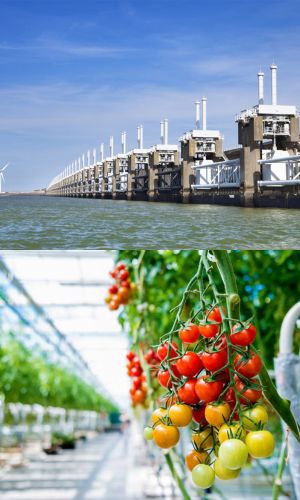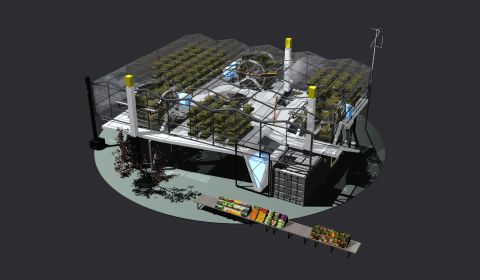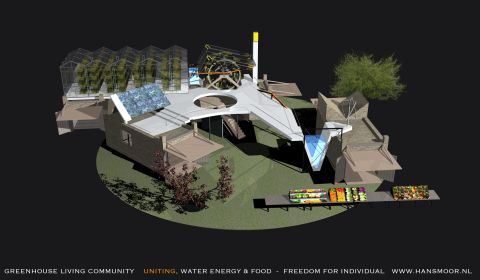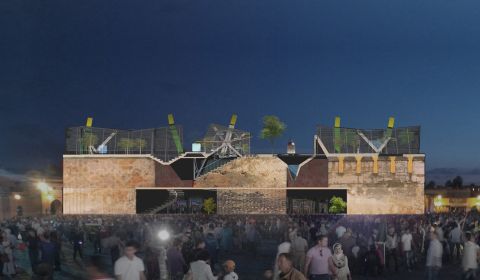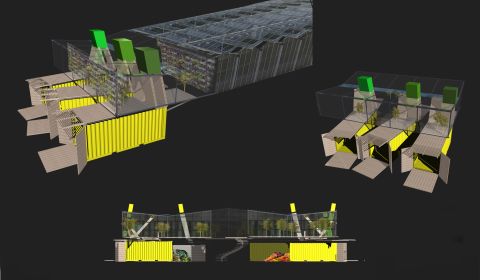
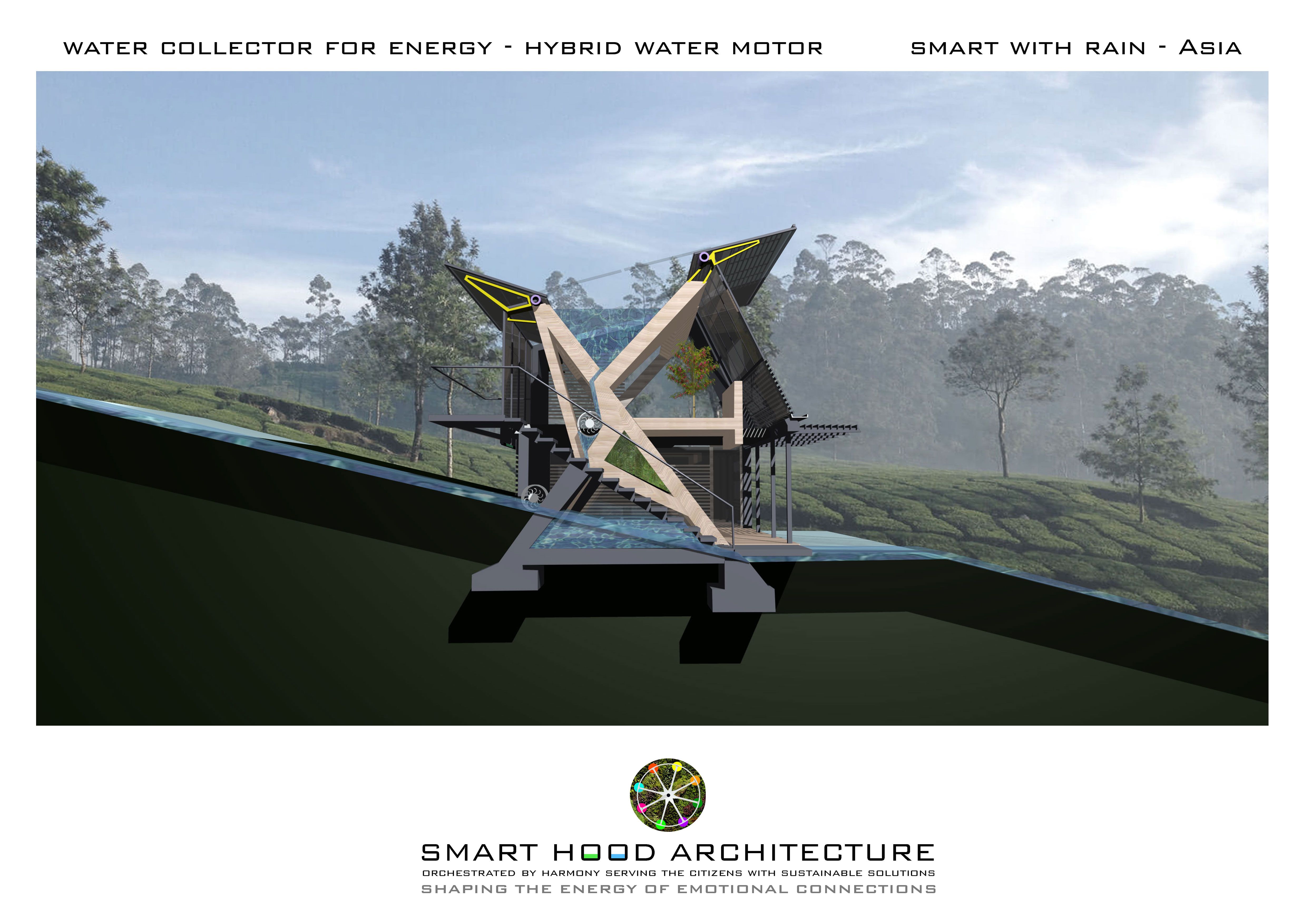

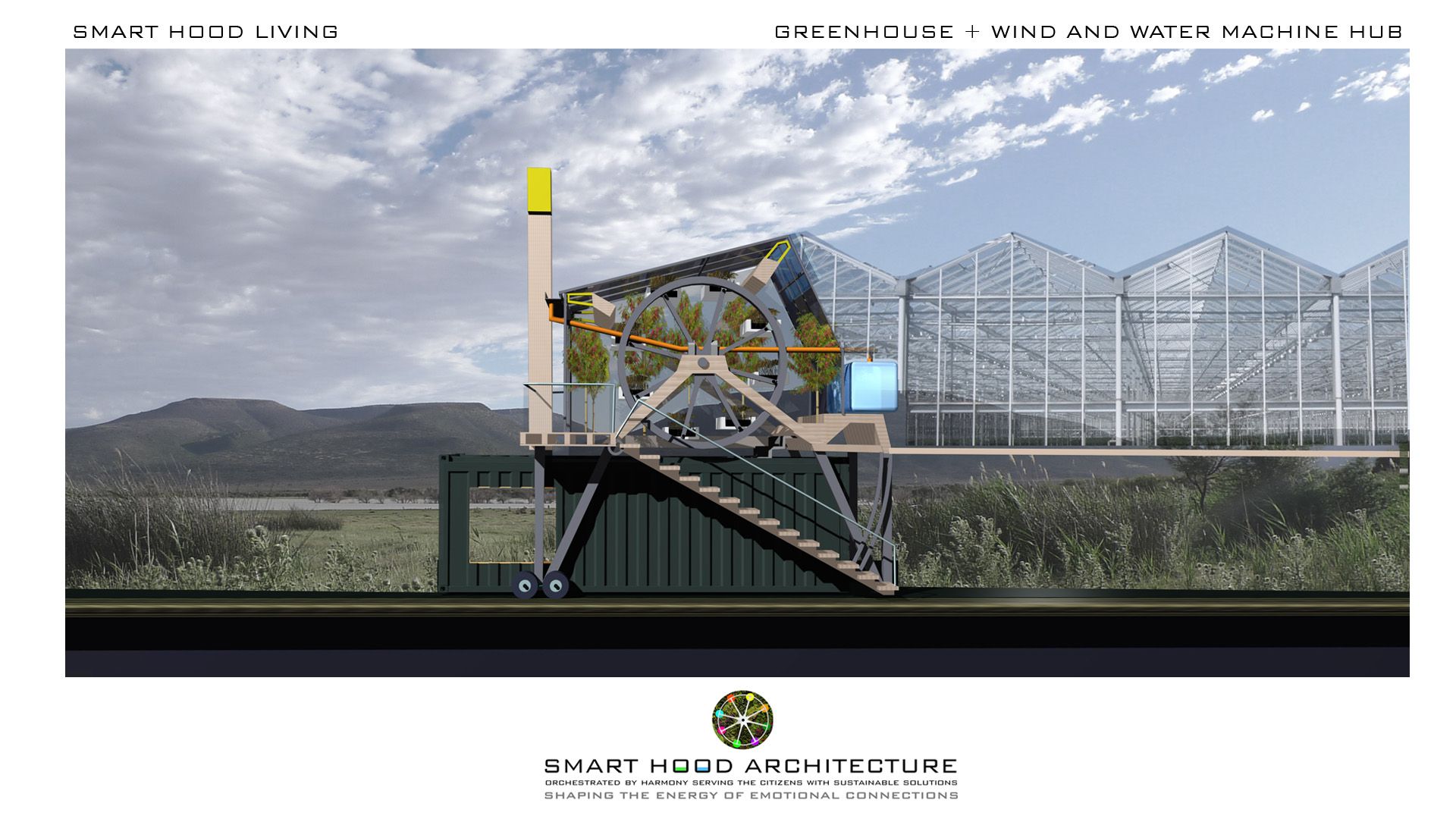
Smart hood architecture is a new spatial and economic connection with the basic human needs of water, energy, and food. It represents a unique emotional connection for individual and public spaces through personal architectural views. The key to this renewal is innovative and technical solutions included by architecture that can mean people's spatial, economic, and emotional progress. The architectural solutions by this imagination are based on a human emotional transformation that is inevitable for a new sustainable way of living. It is the answer to a new order for humanity: information is the nature of life. Hans Moor Architects provides solutions for the increasing information with new emerging conditions, spaces and connections.
1. Water + Energy + Food
2. Sustainable solutions + information technology
3. Architecture + Emotional Connections
Smart hood architecture is an imagination and overall concept of a sustainable living environment.
Smart Hood Architecture is an imagination of a sustainable building environment. ‘Smart Hood’ refers to a neighborhood or a social building environment with its fundamentals on the self-supporting of one household. One household is, in its ideal shape, able to collect rainwater and produce its own drinking water, energy production, and food production. The social environment exists through the exchange between the households and the different shapes of economic dependencies.
Smart Hood Architecture is an example of a net zero building solution. Its structure and environment have a net-zero carbon footprint regarding energy consumption and greenhouse gas emissions. Smart hood architecture is designed to produce as much energy from renewable sources as it consumes over a specified period, typically a year. The overall energy balance is zero, with the power generated on-site or offset through other means (such as renewable energy credits) equaling the energy consumed.
Smart Hood Architecture reduce the environmental impact of the built environment and contribute to the fight against climate change. It has a holistic approach that considers energy and other environmental factors, such as water and materials, to create environmentally responsible and efficient structures.
Key features:
- Energy efficiency through insulation and other technologies to minimize energy consumption.
- Structures incorporate renewable energy sources such as solar panels, wind turbines, or geothermal systems to generate the energy needed.
- Passive design principles, such as household and community building orientation, natural daylighting, and natural ventilation, are employed to reduce the need for mechanical systems.
- Advanced energy monitoring and management systems to track energy usage and make real-time adjustments.
- Sustainable and environmentally friendly building materials to minimize the structure's embodied energy and carbon footprint.
- Smart hood architecture represents the entire building lifecycle, including construction, operation, and eventual deconstruction or recycling.
- Water Efficiency: Water-saving is integrated into the design, including low-flow fixtures and rainwater harvesting.
- Architecture is shaping the energy of emotional connection. Easy and pleasure adaptation to technical and informational solutions.

